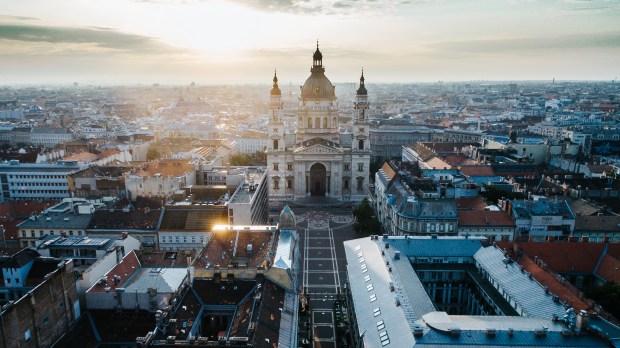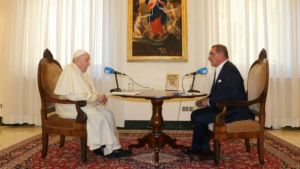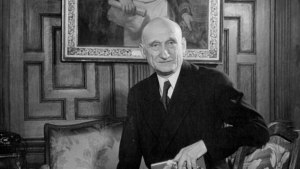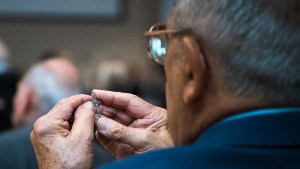Pope Francis is preparing to begin his 34th apostolic journey outside Italy on the occasion of his visit to Budapest (Hungary) and Slovakia, from September 12 to 15.
1. In Budapest, not in Hungary
First mentioned in his return flight from Iraq on March 8, 2021, Pope Francis’ trip to Budapest was immediately presented as a simple trip within the framework of the Eucharistic Congress and not a state visit — in contrast with the stop in Slovakia. This format, restricted to a single day, copies the visits of the Argentine pontiff to the European Parliament in Strasbourg in 2014 and on the 70th anniversary of the World Council of Churches in Geneva in 2017.
The pope will stay only one morning in the Hungarian capital — just enough time to celebrate the concluding Mass of the International Eucharistic Congress, after having met the bishops of the country, representatives of other Christian religions and Judaism, as well as political authorities.
The question of a meeting with Prime Minister Viktor Orban has caused a lot of talk in recent days after a comment by Pope Francis on Spanish radio, in which he confessed not knowing if he was going to meet him. The Hungarian Prime Minister is officially on the program, so with the pope’s comment the question of the political opposition between the two men naturally arose.
This opposition between the two men has never manifested itself publicly. But the way in which the two personalities reacted to the migrant crisis of 2015 revealed two diametrically opposed views. As thousands of migrants crossed the Balkans to Europe, fleeing in particular Islamic State, the Hungarian Prime Minister put up a barbed wire fence on his border with Serbia to prevent them from passing.
This year, in a message addressed to the Catholic lay Sant’Egidio community — an association particularly engaged in welcoming migrants — Pope Francis vigorously criticized the violence of the Islamists forcing many Syrians and Iraqis into exile. But he also denounced the violence that consists in “raising walls and barriers to block those who seek a place of peace. Violence is pushing back those who are fleeing inhuman conditions in the hope of a better future.”
The opposition of their positions on other subjects as well — in particular on the European question or on populism — has led to further speculations, especially as the quick stop in Hungary is in contrast with the “real state visit” to Slovakia.
2. Honor the Eucharistic Congress
If the Pope’s visit to Budapest will be brief, it will nevertheless be one of the highlights of this trip to Central Europe. It was from this event that the rest of the trip to Slovakia was built, as the pontiff explained to journalists on the return flight from his trip to Iraq.
With his participation at the IEC, Pope Francis is following in the footsteps of his predecessors who, very early on, wanted to promote this initiative honoring the Eucharist. Leo XIII encouraged the first Eucharistic Congress organized at the end of the 19th century in Lille to deepen the knowledge and adoration of the Eucharist. The first pope to officially participate was Pius X — nicknamed by some “the Pope of the Eucharist” — in 1905 during the first Congress held in Rome.
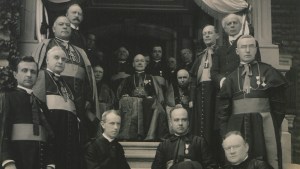
Many years later, Paul VI personally presided over two congresses: that of Bombay (1961) and that of Bogota (1968). John Paul II followed his example by participating in those of Nairobi (1985), Seoul (1989) and Seville (1993). The Polish pontiff then went to the one organized in his country (1997), and finally hosted the Congress in Rome in 2000. Benedict XVI was unable to participate in either of the two IECs held during his papacy, in Quebec City, and in Dublin.
For Pope Francis — who wants this trip to be “marked by adoration and prayer” — this will be his first time as pontiff at an IEC; but he has already announced that he will also attend the next Eucharistic Congress, to be held in Ecuador in 2024.
3. A journey “to the heart of Europe”
During the Angelus on September 5, 2021, just a week before the voyage, Pope Francis referred to it as a trip “to the heart of Europe,” referencing a geographical reality which is one of the slogans of Slovakia, explained to I.MEDIA the Ambassador of Slovakia to the Holy See, Marek Lisánsky.
Slovakia is also a spiritual heart: it is the first country to be Christianized in Central Europe. In 828, Prince Pribina had the first church in the whole region built. Almost 1,200 years later, these ancient roots have made Slovakia a solidly Christian country: 65% of the population is Catholic, and about 85% is Christian.
Slovakia is, finally, a token of the European Union, to which it integrated in 2009; a turning point 20 years after the end of the communist era. This entry into the EU has played a very positive role in the country’s development, underlines Ambassador Lisánsky.
This triple geographical, spiritual, and political anchoring of Slovakia — a discreet but active member of the European multilateral apparatus located in the heart of the old continent — can make it the ideal place for the pope to reiterate his call for the re-establishment of the foundations of the European community.
This European question is, moreover, one of the leitmotivs of the pontificate of Francis and of his diplomacy. He could, as in his previous speeches on Europe, refer to the essential mission that Europe must play in the world and recall the dream carried out, after the war, by one of the Fathers of Europe, Robert Schuman, whom the Catholic Church has just recognized as venerable.
And conversely, in this country marked by authoritarianism in the 20th century — Nazi occupation then integration into the Soviet bloc — the head of the Catholic Church could warn against the dangers represented by nationalist and populist temptations, as he has done on numerous occasions.
4. Slovakia, mosaic and border
A little-known characteristic of Slovakia is its ethnic diversity. This small country of less than 6 million inhabitants is home to 13 minorities, including a large Magyar community (which represents nearly one in ten Slovaks), but also Roma, Czech, Polish, Ruthenian, Ukrainian and German. This diversity is expressed in a linguistic multiplicity which recalls the former membership of Slovakia in the Austro-Hungarian Empire.
This dimension is also coupled with religious diversity, despite the predominance of Roman Catholicism (65%). Slovakia is notably a hub of Judaism in Central Europe, especially of the Orthodox Jews: the country’s first synagogue, that of Bratislava, dates from the 14th century. The pope is to meet members of this community on September 13 with the Bethlehem association.
Different Christian families are also represented: in addition to the Roman Church, in the east of the country, there are many members of the Slovak Greek-Catholic Church, attached to Rome and forming an eparchy of the Byzantine-Slavic rite. On September 14, the pope will go to Presov to celebrate a Mass in this rite inherited from St. John Chrysostom.
The roots of an Orthodox presence in Slovakia go back to the evangelization of the region by St. Methodius himself. Several currents of orthodoxy, influenced by Serbia, Ukraine or Hungary, coexist in the same country.
Finally, there is a significant Protestant presence, which dates to shortly after the reform and was imported by the German-speaking population. A territory of confrontation with the Catholic Church during the Renaissance, Slovakia today sees Calvinists and Lutherans peacefully coexist with their former adversaries.
The pope will undoubtedly be sensitive to this ethnic diversity, especially since it is geographically divided in two between the west and the east of the country, making Slovakia a pivotal country between the West and the East. In this land of martyrs and persecutions, he might put forward the Catholic tradition of “heroic confessors” as well as the value of “hospitality,” as he announced during the last Angelus in Rome.
5. An important meeting with the Romapopulation
One of the last appointments of Pope Francis on Slovak soil will be the visit to the district of Lunik IX in Kosiče. This is one of the largest Roma regions in Central Europe, where the standard of living is particularly low. Unlike some Western European Roma, Slovakian Roma are settled and present throughout the country.
This is an ancient reality: it was the Empress Marie-Thérèse who set up assimilation programs in the 17th century. These Roma villages have endured and their population is today represented in the Slovak Parliament. However, the effective integration of this minority is far from being a reality in Slovakia, as is indeed the case everywhere in Europe.
It will not be the first time that the Argentine pontiff has met Roma. In 2019, during his trip to Romania, he went to Blaj to apologize to the local population for the weight of “discrimination, segregation and ill-treatment” suffered over the centuries by the Roma. He once again appealed for welcome and denounced the indifference to the misery that afflicts this population.
He also encouraged the Roma to build a more human world, stressing the importance of brotherhood between peoples. In Kosiče, we can expect Pope Francis to return to this theme.
